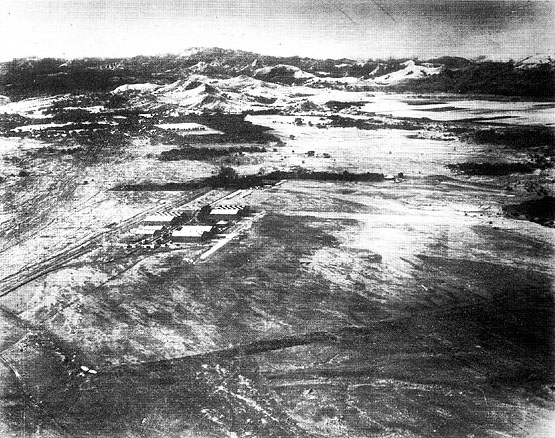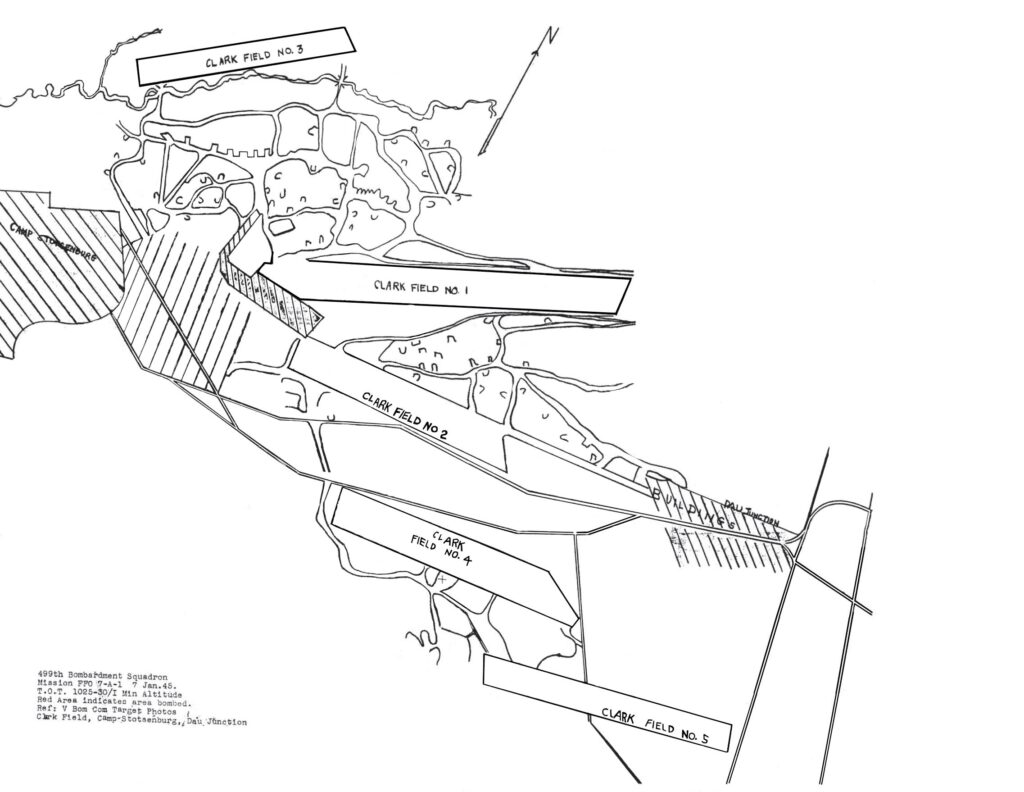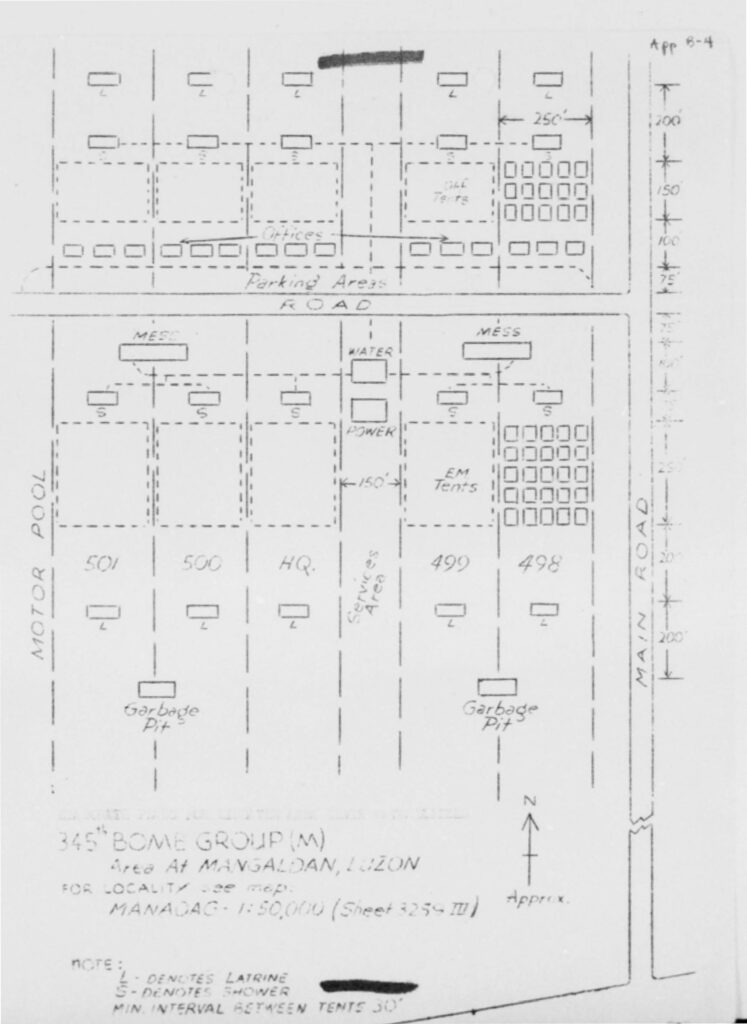An interactive map of the Luzon airfields used by the 345th Bomb Group.
After three and a half months operating out of Tacloban on Leyte, the 345th Bomb Group packed up camp and moved 400 miles to the northwest to an airfield near San Marcelino, Luzon. The 501st Squadron flew their last mission out of Tacloban on February 7, 1945 and began their move to San Marcelino on the 12th. They flew their first mission from their new home on February 15.
The 501st flew 39 combat missions from San Marcelino. These missions varied between attacks on railroads and rolling stock, close air support for ground troops, raids on enemy installations, and attacks on enemy shipping, both off shore and in harbor. Close air support was flown for troops involved in the Luzon invasion while missions against enemy installations and shipping ranged from Luzon to Indochina, Hainan, mainland China, and Formosa.
On May 10, 1945 the 501st flew their last mission out of San Marcelino, packed up camp and moved 25 miles to Clark Field, near Angeles City, Luzon. Their first mission flown from their new home was on May 13. The 345th used Clark Field Strip #1 for takeoffs and landings during their stay.

The Clark Field map below was taken from the mission report for FFO 7-A-1, flown January 7, 1945 by the 499th Squadron. The map was split over two pages in the report, but by photoshopping the two pieces together and removing the flight path lines of the attack, a wartime layout of the airfield was produced. This map was also georeferenced for use in the production of the interactive map at the top of this post.

June and July 1945 saw the departure of many of the seasoned veterans of the group and the arrival of many fresh aircrews. During late June and through July there was an intensive effort to train the new aircrews in the techniques and tricks of the the trade that had been accumulated through months of trial and error.
Lingayen was frequently used as an emergency airfield and 345th planes would land there after a long mission to refuel so that they could make it back to their base.
Within the 345th Unit History for July 1945 is a hand drawn map of the 345th’s encampment at the Mangaldan airfield, which is about ten miles east of Lingayen. I could not find any reference to a move to that field, so perhaps it was part of a tentative plan that was never executed.

The 345th operated out of Clark Field for about two and a half months. On July 25, LST’s loaded with their ground echelons left Subic Bay for Ie Shima. The air echelons followed on July 28. The LST carrying the 501st turned back due to a storm warning and was not at the new camp when their air echelon arrived, making for a few miserable days for the aircrews who were left without their tents and mess facilities.
This 900 mile move would take them to the “door step” of Japan and the end of the war. They would fly their first mission out of Ie Shima on July 29.
